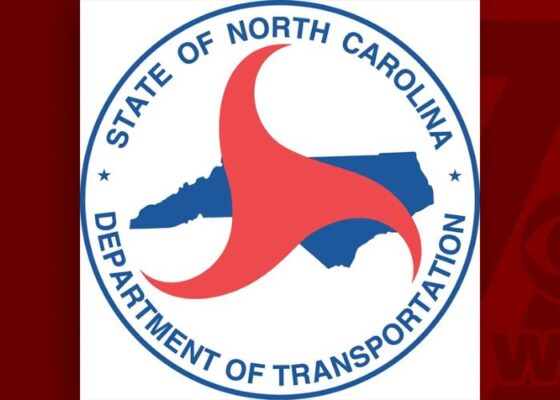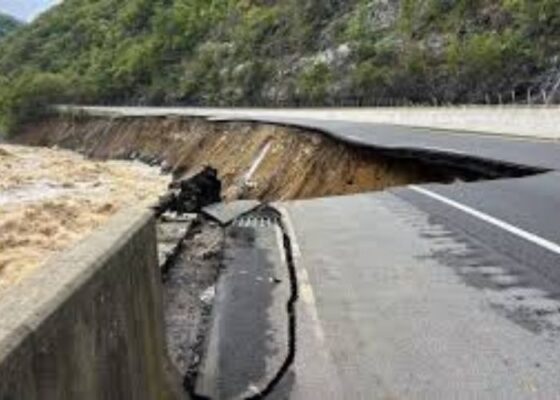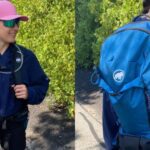As a travel writer who has spent seven years exploring North Carolina, I was sad to hear that the North Carolina Department of Transportation (NCDOT) recently sent out a travel alert telling people not to go to western North Carolina for now. Read below about “North Carolina Travel Alert- Why the NCDOT Is Urging Travelers to Avoid Western NC”.
As a travel writer for NC for many years, I’ve had the chance to see the beautiful Blue Ridge Mountains, hike through lush woods, and visit cute mountain towns like Asheville and Boone. Western North Carolina is one of the most beautiful and fun places in the state. Recently, though, natural disasters and bad road conditions have made going to the area unsafe.
Table of Contents
Why is the NCDOT Issuing This Travel Alert?
The NCDOT sent out the travel advisory because Tropical Storm Fred did a lot of damage in western North Carolina. Early in August, the storm brought very heavy rains to the area, which led to major floods, landslides, bridge washouts, road collapses, and other problems.
I’ve seen the damage that the floods did for myself. Small mountain towns were completely destroyed, and communities were split in half by roads and bridges that fell. I love to walk in Pisgah National Forest, and it was also hit hard. Parts of the trails I’ve been hiking on for years have been washed away or hidden by landslides.
Even though cleanup work has been going on for weeks, the damage to the trails and structures is very bad. The NCDOT says that a lot of roads and bridges are still not accessible. It could be fatal to try to drive around roads that have fallen or over bridges that aren’t stable.
Over the next few days, more heavy rain is also forecast. This will make things even more dangerous and lead to more flooding, landslides, and harm.
What Areas are Most Affected?

The NCDOT says the traffic alert covers 18 western counties: Alleghany, Ashe, Avery, Berry, Burke, Caldwell, Catawba, Haywood, Henderson, Jackson, McDowell, Mitchell, Madison, Swain, Transylvania, Watauga, and Yancey.
As a travel writer, I’ve spent a lot of time in almost all of these countries. It’s easy for me to see why the NCDOT chose them. They have the Blue Ridge Parkway and Great Smoky Mountains National Park, as well as many of the most famous places to visit in western North Carolina.
The alert is mostly for tourists and vacationers coming from outside these countries. But the dangerous situations put at risk even people who live in the area who are trying to get to work by driving around broken infrastructure.
What Types of Travel Are Most Dangerous?
The NCDOT tells people not to go to the 18 counties unless they have to. Among these are:
- Going on vacation to hike, camp, see places, etc.
- Day trips to well-known tourist spots like Asheville or the Biltmore Estate
- As well as trips to festivals and shows
- Trips to look at the leaves in the fall
- Mountain roads in the middle of nowhere or beautiful byways like the Blue Ridge Parkway
- Walking along paths in parks, forests, or wild places
Right now, pretty much any kind of leisure travel to the area is very dangerous. It might be dangerous or impossible to get around roads, bridges, and trails that are broken. In addition, the weather could get worse at any time.
What Types of Travel Are Still Feasible?
The NCDOT says that anyone planning a vacation trip to western NC should put it off. They do say, though, that required trips can still be made as long as people are careful and aware of the risks. This includes going on trips for
- People who work in the 18 counties
- Appointments for medical care or family issues
- Moving goods for fixing and fixing up damage from floods
- Taking care of animals or pets on homes that were damaged by the storm
The NCDOT says that people who need to drive within the area should check their website for up-to-date information on road conditions and closures. Give yourself extra time, stay away from flooded areas and broken infrastructure, and be very careful. If it rains a lot or at night, don’t drive.
If you are told to evacuate, do so, and be ready to change your plan. Basically, don’t move unless you have to, and if you do, be very careful.
When Will Conditions Improve?
The NCDOT says that the travel alert will stay in place until the flood waters go down, damaged roads and bridges can be fixed or rebuilt, and the situation is safe again. It’s possible that this will take weeks or even longer.
I live in North Carolina and write about travel, so I know how much this area depends on tourists. I hope that the hard work of the road crews and repair teams will soon make it safe to get around again. But for now, things are still too dangerous.
For updates on when the travel alert is lifted, follow the NCDOT on social media or check their website. I know I’ll be monitoring the situation closely and looking forward to the chance to safely return and support the region.
How Can You Help?
If you had been planning a trip to western NC, consider rescheduling for a later date when the travel alert has been lifted. Or, plan to visit other areas of the state not currently under an advisory. This can help support NC tourism without putting yourself in danger.
You can also make monetary donations to nonprofits assisting with disaster relief and recovery efforts in the region. Supporting these organizations helps repair damage and rebuild infrastructure.
Additionally, once it is safe to visit, consider taking a trip to support the area. Small mountain towns rely heavily on tourism and will suffer from weeks or months of reduced visitation. In the future, your travels can assist greatly with their economic recovery.
Stay Safe Out There
As a travel writer and NC resident, I care deeply about this region. My heart goes out to all the communities impacted by this tragic flooding. I know the damage is devastating and recovery will be difficult.
But the resilience and spirit of North Carolinians is strong. If we all come together and look out for each other, I’m confident these towns will rebuild. In the meantime, the safest option is avoiding unnecessary travel. I hope “North Carolina Travel Alert- Why the NCDOT Is Urging Travelers to Avoid Western NC” article provides helpful information during this difficult time. Stay safe out there friends.

I am Monica, the enthusiastic explorer behind funthingsworld.com. With a degree in Leisure and Recreation Management and over 5 years of diving into thrilling adventures, I’ve made it my mission to uncover the best and most exciting activities around the globe.
Stay connected and get a sneak peek into my adventures on Instagram: @mongjerde










